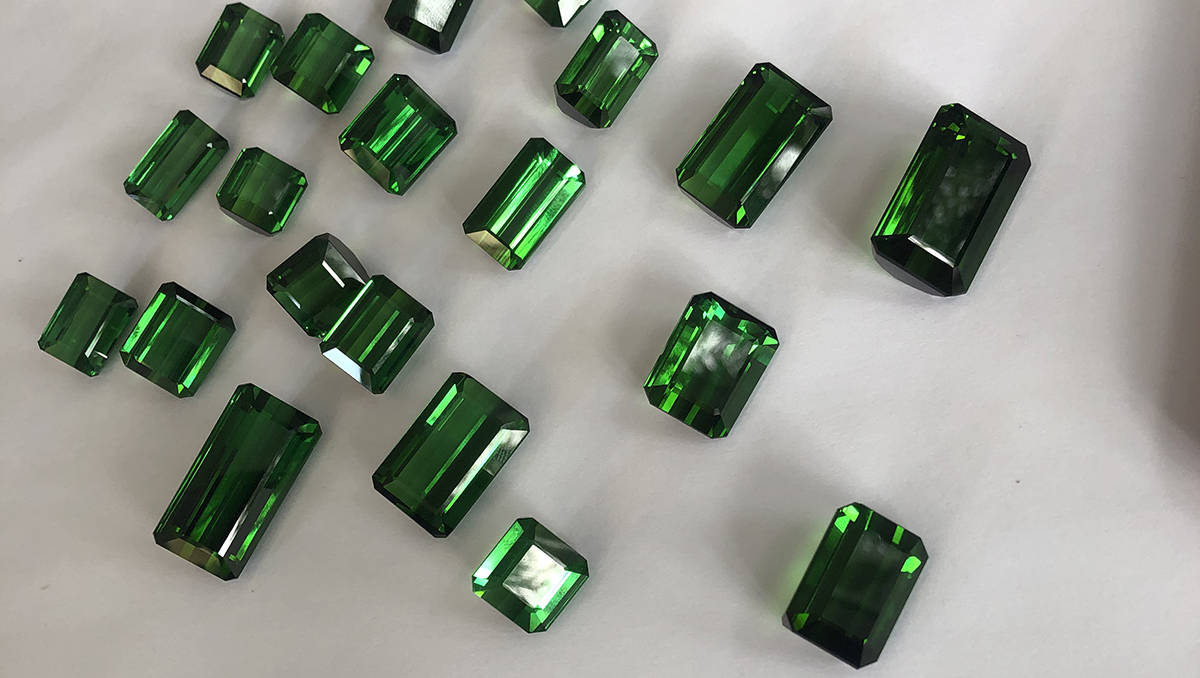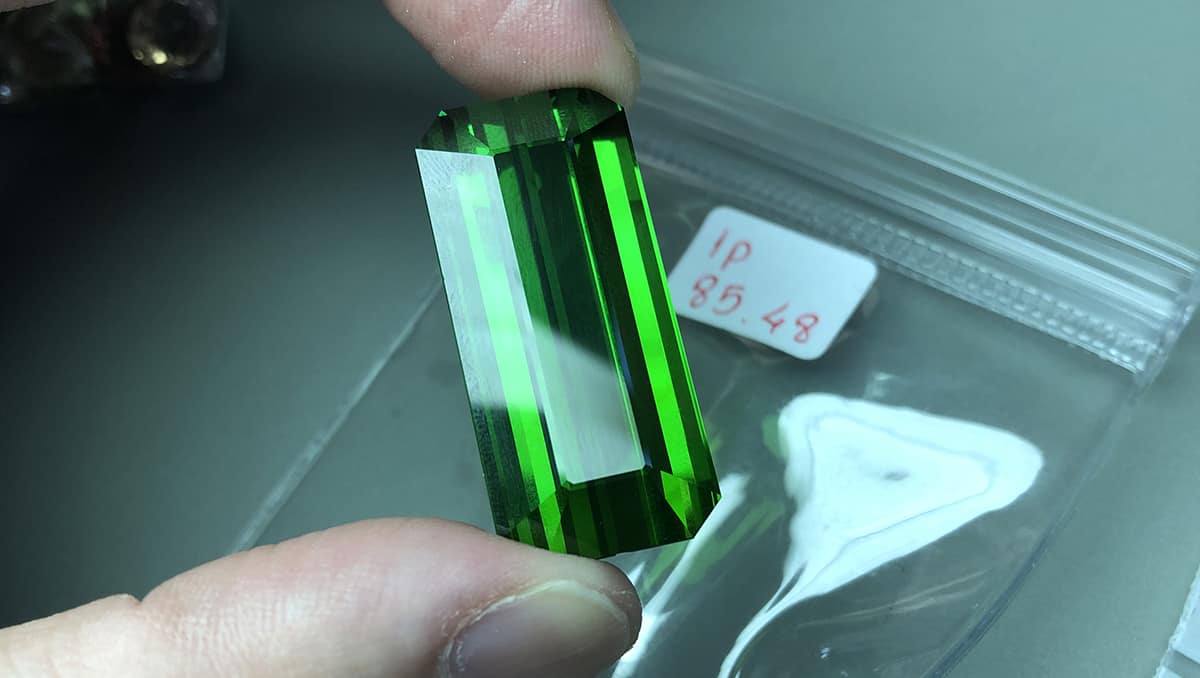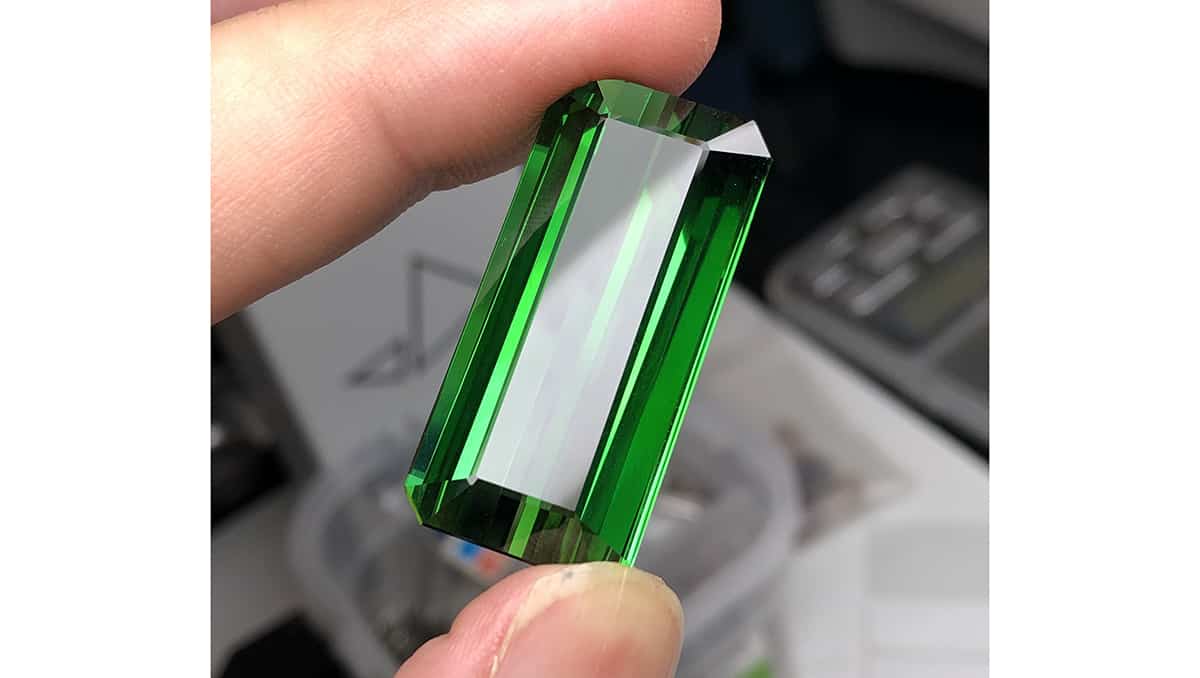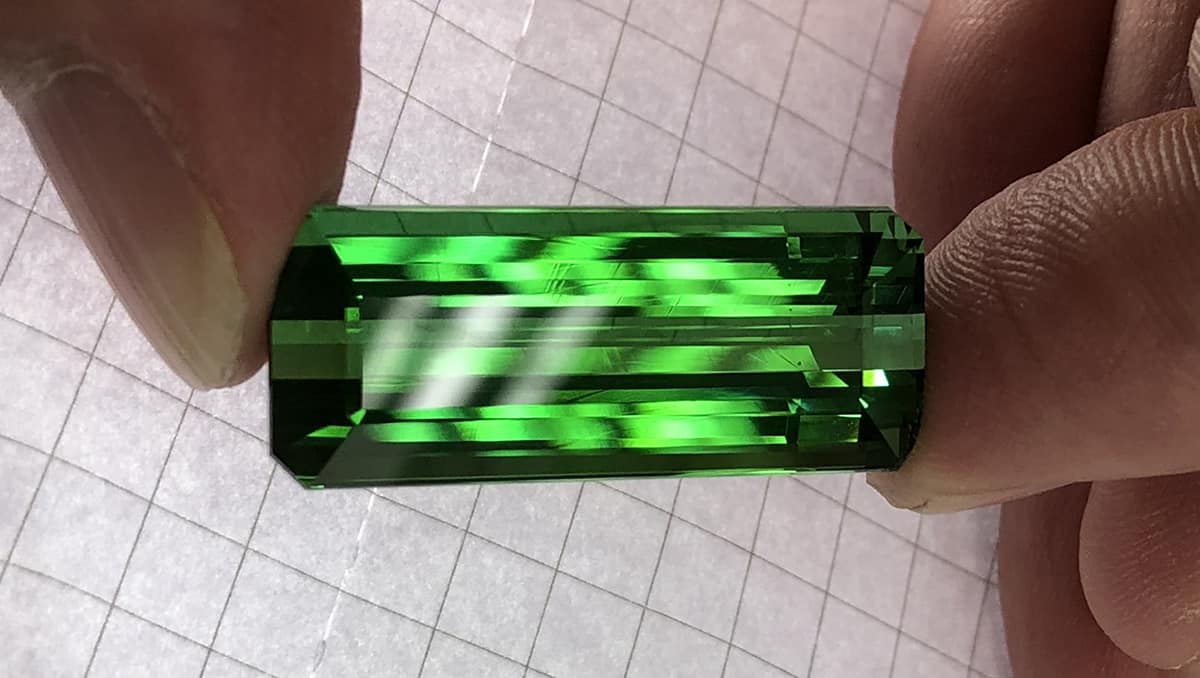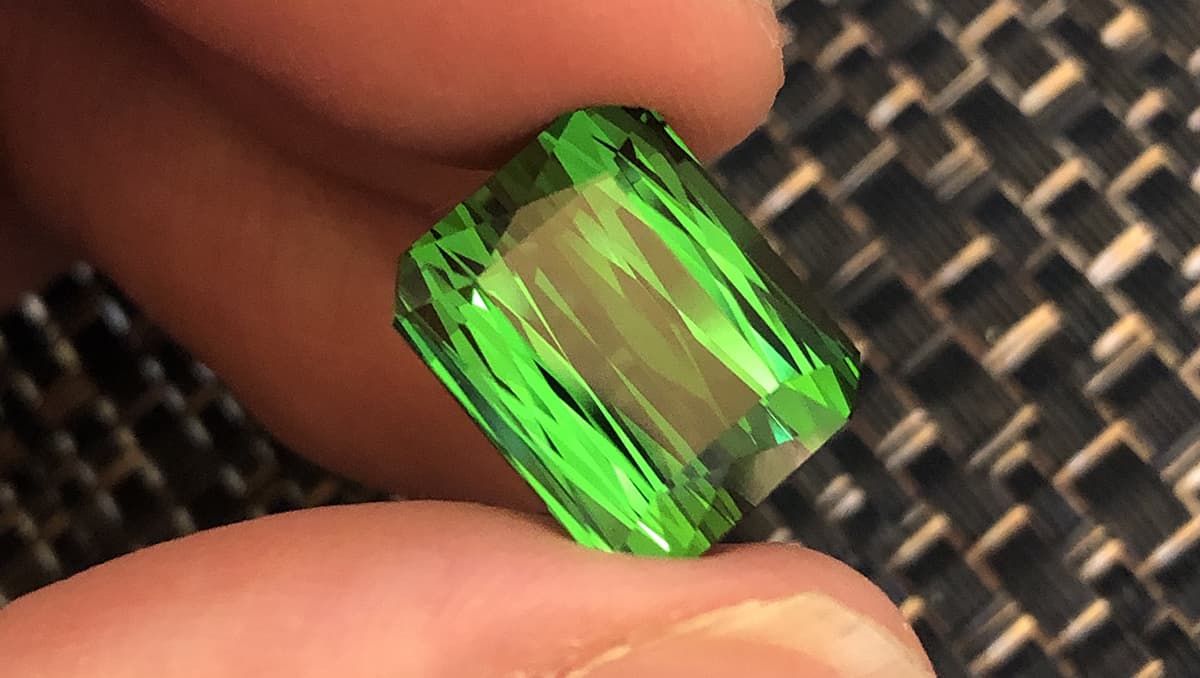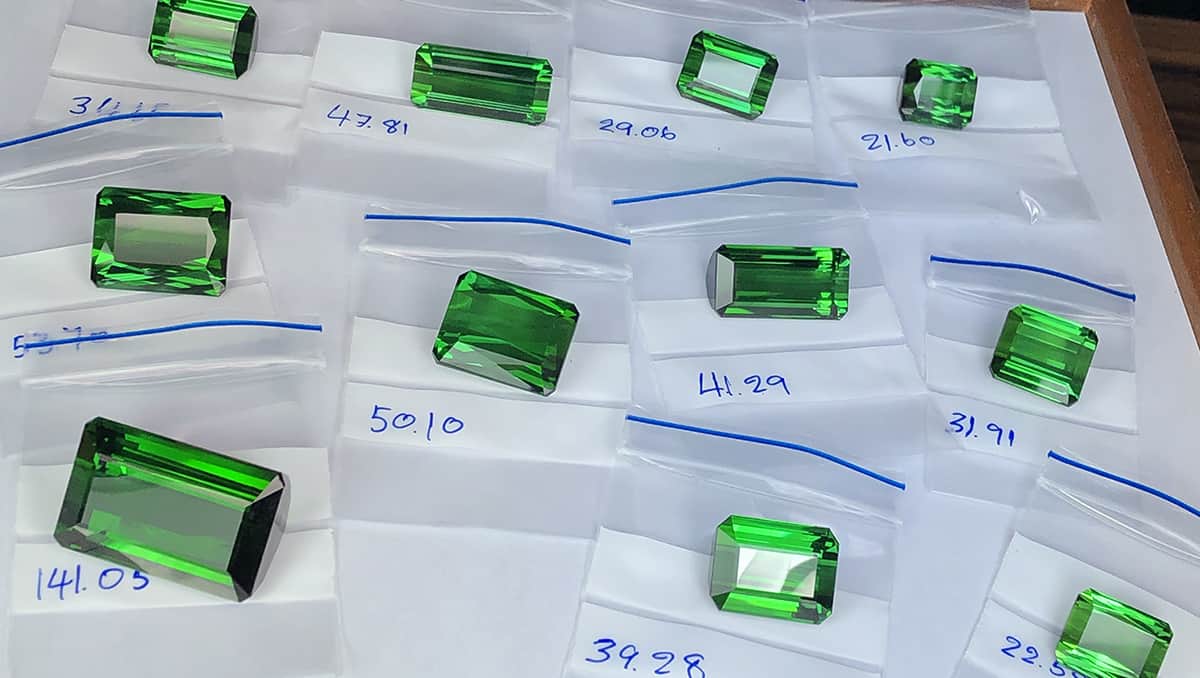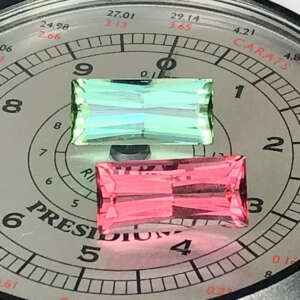Green Tourmaline From Rubaya, Democratic Republic of the Congo
Known somewhat casually and unofficially as Congo #2 by Chanthaburi’s hundreds of African rough gemstone dealers, these electric grass-green tourmaline crystals burst out of a new deposit in the Eastern Congo’s Rubaya area in July / August 2019.
The crystal sizes and clarity from this mine have been absolutely exceptional with huge pieces of rough being found, and now as material makes its way through the manufacturing and distribution ecosystems of Thailand’s gem industry, 50ct+ and even 100ct+ flawless pieces are not uncommon.
The color is at best is an absolutely vivid grass green with slight blue hints. In the 30ct+ large sizes, pieces with the finest colors have been voraciously sought and bought by dealers who know the price can only go up.
It appears that Congo #2 is already played out with current mine production being almost at a standstill, weaker in color, and found in smaller sizes. The lead picture is a 54.22 carat ultra-fine piece, exemplifying the very best grade that this short-lived mine produced.[/vc_column_text][/vc_column][/vc_row]
FOLLOW
the GREEN
FAIRY
Exquisite & Rare GREEN TOURMALINES
A Huge Tourmaline Crystal from Rubaya, Eastern Congo
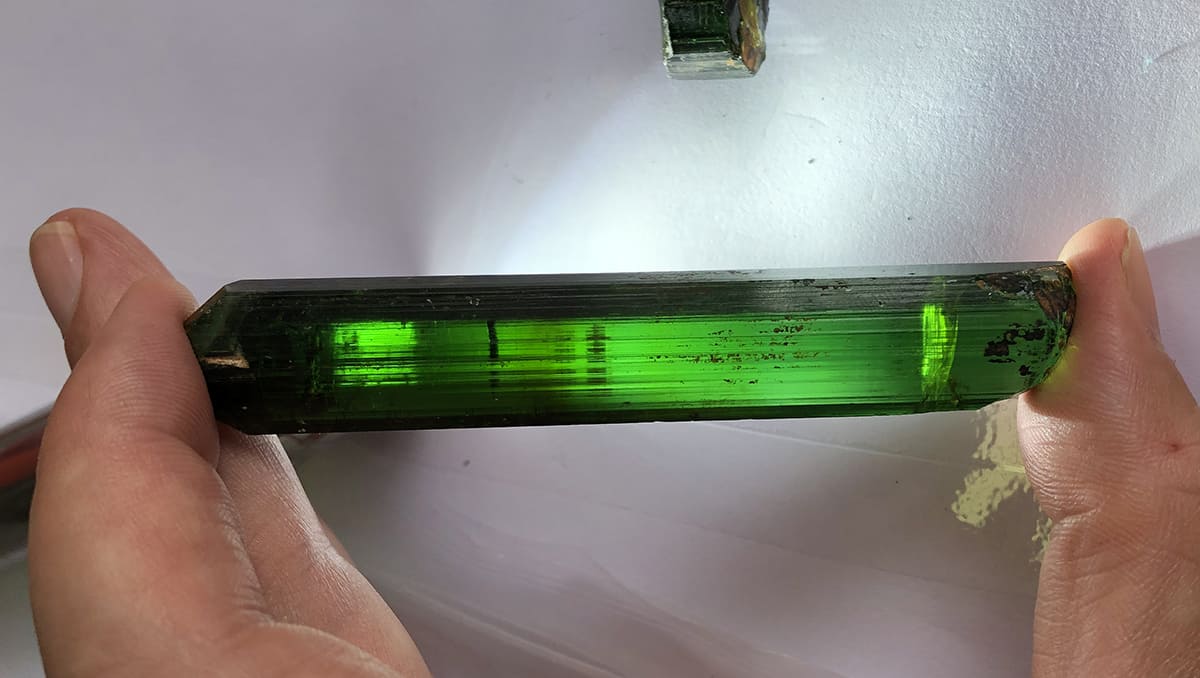
This huge crystal above that was 6 inches in length and 18mm across was heavily striated and is typical of the the pocket known as “Congo 2”
Waterworn Green Tourmaline Rough
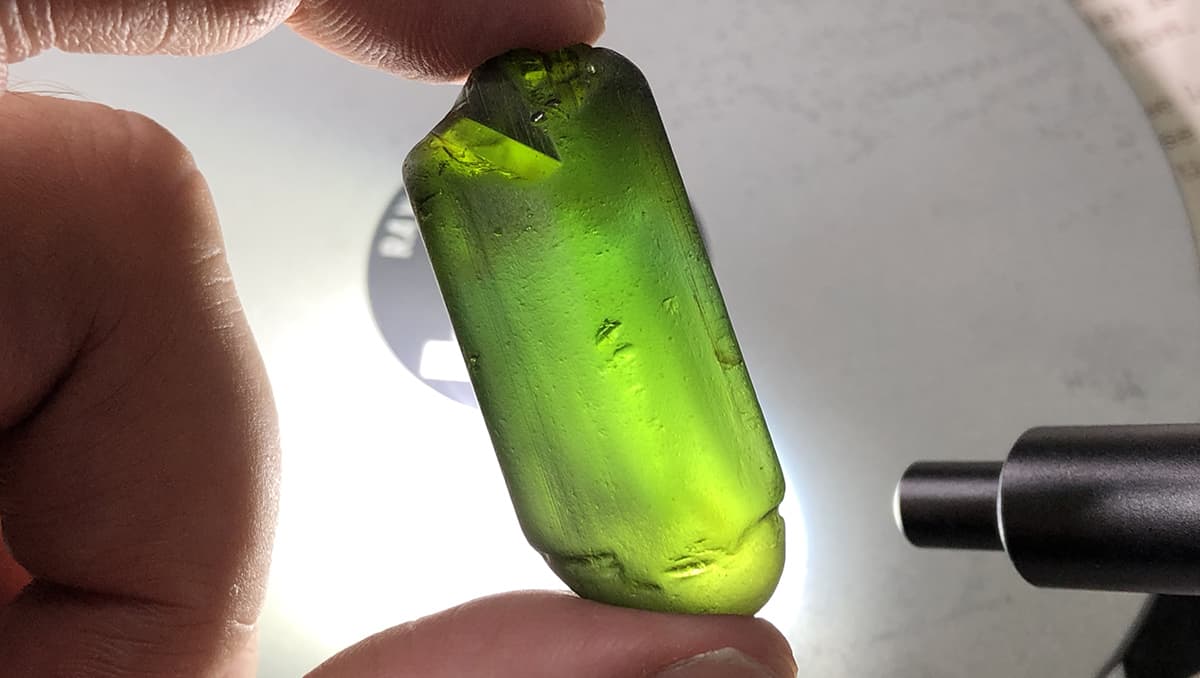
This huge crystal that was came into the office several months before the main rush, was, unbeknown to us, the first shot across the bough. Interestingly this crystal is waterworn meaning that is was likely found in a river area, and one could hypothesize that waterworn river-found crystals such as these tipped prospectors off to the main-pocket which was later found away from the river with and showed sharp striae.
Closed C Axis Tourmaline
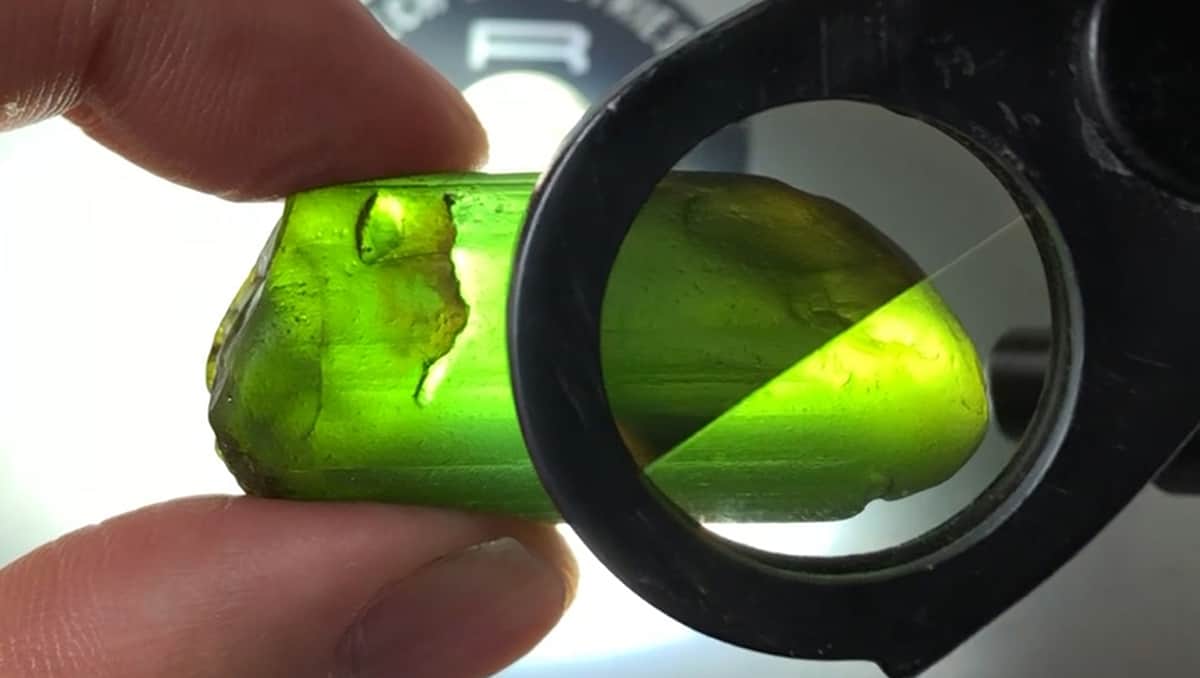
Unlikely other tourmaline rough from other tourmaline deposits in the rubaya area all of Congo #2 was closed c-axis. This difference in optics means that lapidaries were constrained regarding which gem-shapes they could cut. The dark olive c-axis light had to be kept out of the finished gemstones, meaning shapes such as round, oval, cushion, trillion and pear were not cut. The cuts had to be long emeralds and baguettes that had steep shoulders to keep the olive colors out.
Fortunately, the Congo 2 green tourmaline crystals tended to be long and acicular and very well suited to the cut that it’s closed c-axis dicated. In the picture is a London Dichroscope that is isolating the tourmaline crystal’s c-ray in the upper half of the viewport. If I twist the dichroscope around, it reveals a completely closed c-axis.
Twist &
Shout
rotate the dichroscope and the c-axis closes
this will dictate a cutting style that exhibits only the A & B Rays
Typical Congo 2 Green Tourmaline Shapes
The A + B rays are the same and are open,. and the C is semi to mostly closed with olive tones. They are unsuited to cutting anything other than emerald and baguette shapes to preclude all C-axis color.
All Images & Video © Copyright of Flames Jewelry 2019

